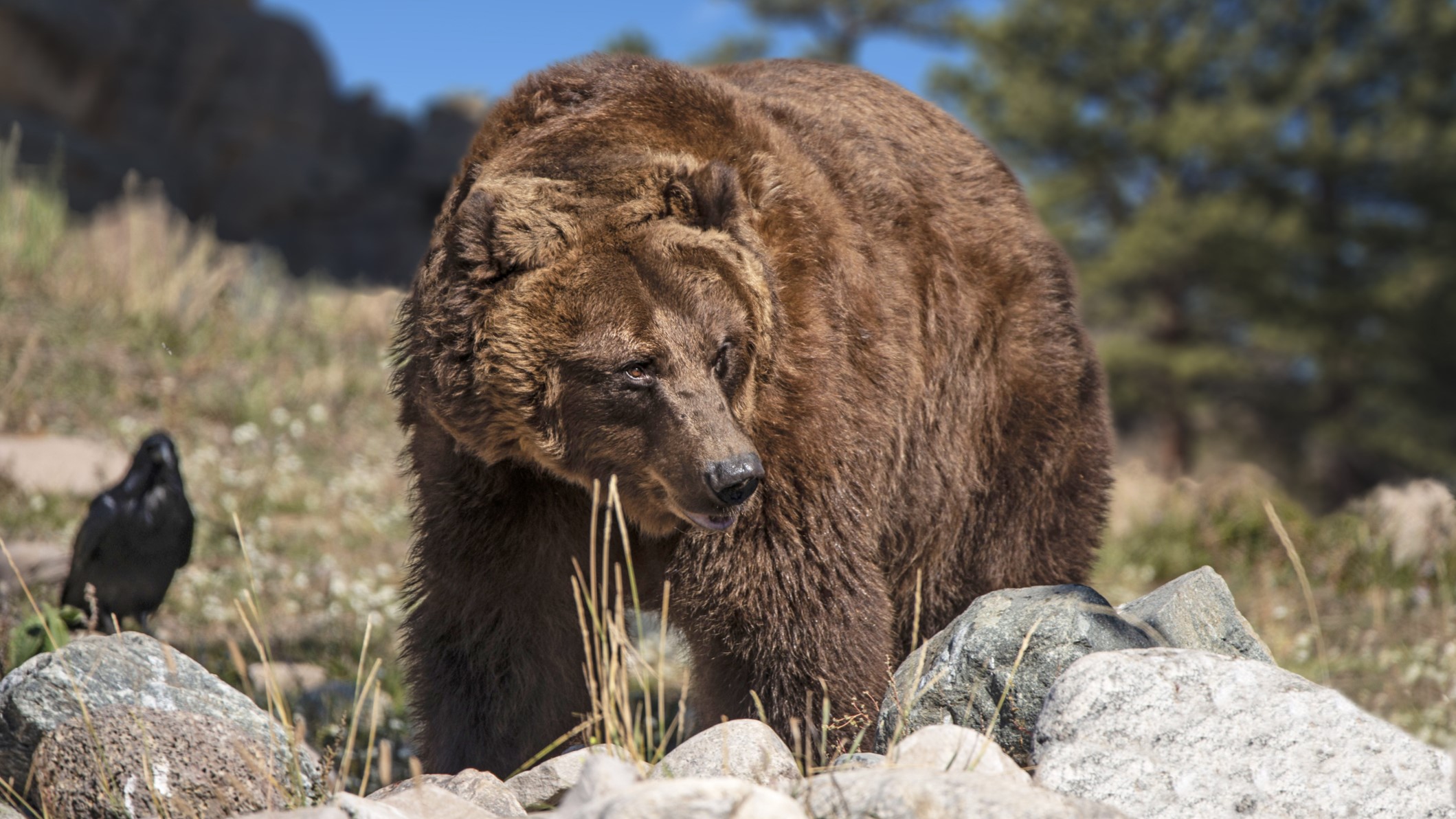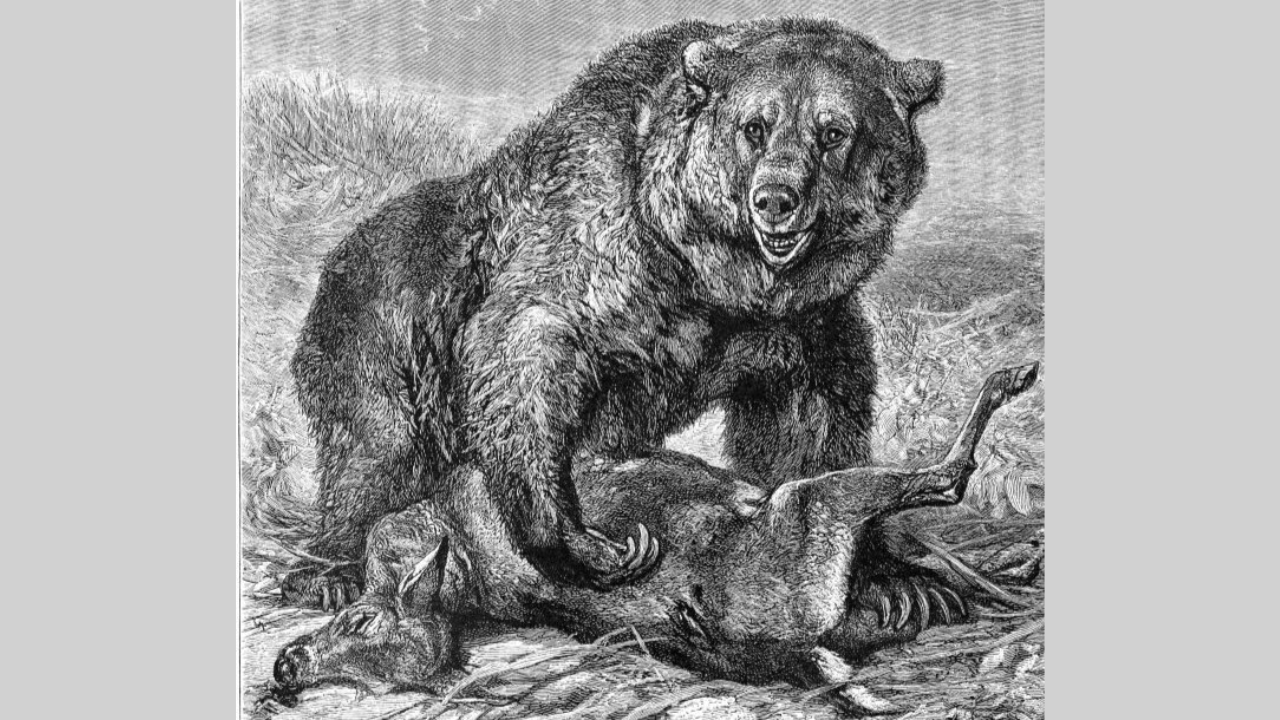Extinct 'hypercarnivorous' California grizzly bears were actually mostly vegetarian before Europeans showed up
Although extinct California grizzlies upped their meat consumption following European colonization and agricultural expansion, they were mostly veggie and smaller than what historical sources claim.

Extinct California grizzly bears weren't the giant, blood-thirsty "hypercarnivores" humans made them out to be, new research has found.
It turns out that the once-abundant grizzly bears were mostly vegetarian and only occasionally indulged in livestock after European colonizers and American settlers began farming in California. Contrary to popular belief at the time, these grizzlies also didn't grow to monstrous proportions and rarely, if ever, tipped the scales at the oft-cited number of 2,000 pounds (900 kilograms).
The last reliable sighting of a California grizzly bear (Ursus arctos californicus) dates to 1924, and the subspecies of brown bear likely went extinct soon after. Historical sources consistently paint California grizzlies as murderous beasts — but these records are more accurate representations of prevailing attitudes toward wildlife at the time than they are of the bears themselves, according to a study published Wednesday (Jan. 10) in the journal Proceedings of the Royal Society B.
"By the time the California grizzly went extinct, it had been featured in a vast archive of documents and images," which suggested the bears attacked people and decimated livestock, researchers wrote in the study. "While these things were true in some ways, it was certainly not the whole story," lead author Alexis Mychajliw, an assistant professor of biology and environmental studies at Middlebury College in Vermont, told Live Science in an email.
Farms mushroomed across the state during the Spanish Missions and Mexican Rancho period, between 1769 and 1848, driving grizzlies into shrinking pockets of habitat. The Gold Rush of 1849, followed by California's admission as a U.S. state in 1850, sparked waves of immigration that put further pressure on bears.
Related: Half-asleep bears are wandering around Siberia because it's too hot to hibernate
For the study, the researchers measured the abundance of stable versions, or isotopes, of nitrogen and carbon in California grizzly pelts and bones. Isotopes vary depending on the food source and are incorporated into an animal's tissue via its diet, meaning they can reveal what the creatures ate.
Sign up for the Live Science daily newsletter now
Get the world’s most fascinating discoveries delivered straight to your inbox.
The results indicated that grizzly bears were largely veggie both before and after the first Europeans arrived in the state in 1542, which is consistent with the diet of modern brown bears.
But California grizzlies more than doubled their meat consumption after the first settlers arrived. Meat from livestock and wild terrestrial animals shot up from 9% of their diet before 1542 to 26% after Europeans set foot in California, according to the study. "The bears likely increased meat consumption due to landscape changes coupled with the arrival of a new source of protein — livestock," Mychajliw said.

This dietary shift was inflated in contemporary accounts, which encouraged widespread persecution of California grizzly bears and eventually led to their extinction, according to the study.
Newspapers also wildly exaggerated the size of California grizzlies. When the researchers measured skulls and teeth from natural history collections, they found the extinct bears weren't any larger than grizzly bears (Ursus arctos horribilis) that live in North America today and the average one probably weighed around 440 pounds (200 kg).
Historical overestimates could be due to hunters targeting the biggest bears. "The bears reported in newspaper clippings were often killed as trophies, as part of publicity stunts, or even sold for meat," the researchers wrote in the study. "Therefore, there were both monetary and reputational incentives to both capture the largest animals possible and to exaggerate the size and aggressiveness of captured animals."
The researchers highlighted the sad story of Monarch, a California grizzly bear captured north of Pasadena in 1889 as part of a publishing stunt. Convinced that grizzlies were voracious meat-eaters, zookeepers fed Monarch a rich diet of raw beef, apples and biscuits, which caused the bear to become obese and develop osteoarthritis. "When Monarch died he weighed 1,127 lbs (511.2 kg), more than twice the size of the average California grizzly in our sample," the researchers wrote.

Sascha is a U.K.-based staff writer at Live Science. She holds a bachelor’s degree in biology from the University of Southampton in England and a master’s degree in science communication from Imperial College London. Her work has appeared in The Guardian and the health website Zoe. Besides writing, she enjoys playing tennis, bread-making and browsing second-hand shops for hidden gems.










